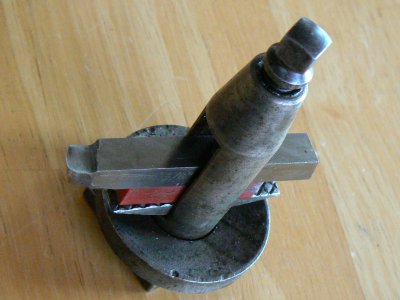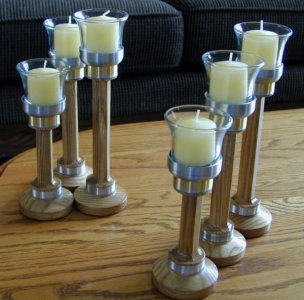- Joined
- Feb 5, 2015
- Messages
- 662
I posted a thread about making gifts a while back using our metalworking machines.
http://www.hobby-machinist.com/threads/using-your-metalworking-machinery-to-make-unique-gifts.32303/
Although I mentioned this, I don’t know if I stressed this point enough so I’m going to mention it again:
Sometimes your “significant other” might object to the gradual accumulation of machinery in the garage (and the expense that it entails).I assure you that most of her objections will disappear if you make a few gifts for her mother, LOL.
I wanted to make a small stand for a pretty vase that my wife (who is now deceased) obtained in Mexico. She loved sunflowers and my intention was to put a candle inside the vase so that the sunflower would glow when viewed in dim lighting.
This is the vase. The photo was taken during daylight hours so it’s difficult to see the candle flame. The little stand is really the point anyway and more specifically the legs of the stand.
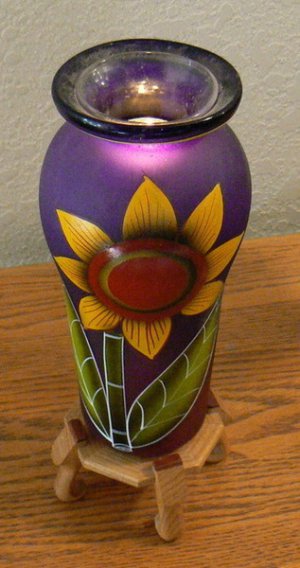
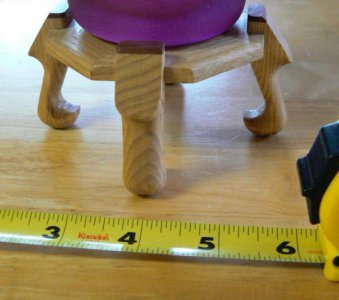
I thought that it would be a real PITA to jigsaw each of the legs individually, carefully sand them to finish dimensions and then radius all of the edges with a router. Why not use my vertical mill to machine a length of wood stock to the correct contours and then simply saw out individual legs ? Something like this:
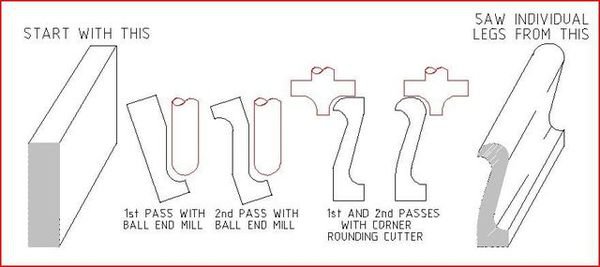
So that’s exactly what I did. I didn’t photograph the milling operations (they occurred a few years ago) but they followed the above illustration almost exactly. This is a blank that I made for a different purpose but you can see that the finish contours of the legs are done except for slicing off the individual legs and routing the edges.
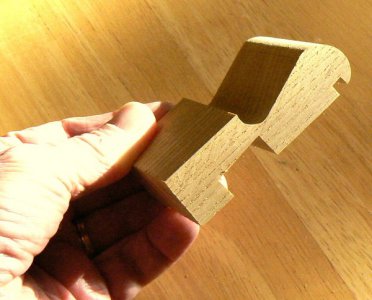
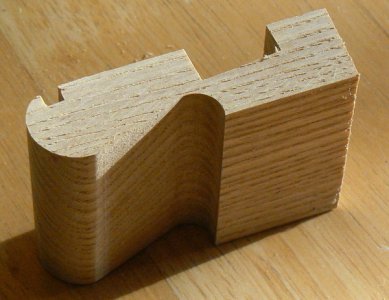
At another time, I made several stands to hold potted plants – the legs were made using the same process as the legs for the vase stand. (BTW note the removable ceramic tile at the bottom of the stand to collect any water dripping from the potted plant.)
The hardwood keys that join the top segments were made by corner-rounding a length of stock in the vertical mill and then sawing the individual segments to the desired thickness. Just like the legs, actually.
The slots in the white oak top segments were also produced in the mill using a fixture specifically designed for the semi-octagonal shape.
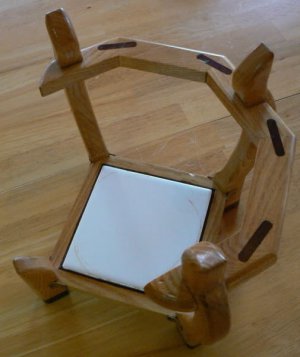
After slicing off four legs to the desired thickness, I used a corner-rounding cutter in this small, portable router table to round the edges. The router table was made with the help of the vertical mill with various cutters and a boring head.
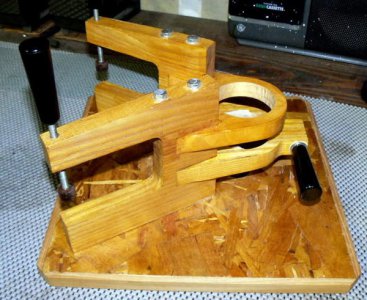
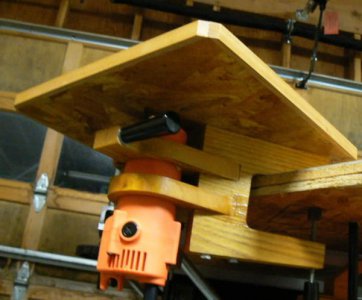
This handy router table was described in detail in the following thread:
http://www.hobby-machinist.com/threads/small-extremely-portable-router-table.32386/
After some finishing touches on the legs (like adding the little walnut caps) and a little sanding, the legs were glued to the base of the stand:
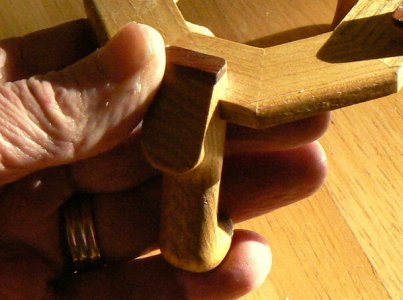
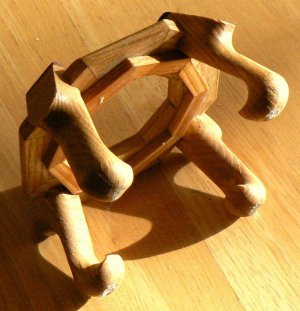
A coat of shellac to seal followed by a coat of polyurethane and the little stand was done. My father-in-law (who is a very fine woodworker) made an interesting comment when he saw the finished project.
He noted that it is much more difficult to do good joinery in small projects than it is in normal-sized projects and he wondered why I would spend so much time on such a tiny project …
http://www.hobby-machinist.com/threads/using-your-metalworking-machinery-to-make-unique-gifts.32303/
Although I mentioned this, I don’t know if I stressed this point enough so I’m going to mention it again:
Sometimes your “significant other” might object to the gradual accumulation of machinery in the garage (and the expense that it entails).I assure you that most of her objections will disappear if you make a few gifts for her mother, LOL.
I wanted to make a small stand for a pretty vase that my wife (who is now deceased) obtained in Mexico. She loved sunflowers and my intention was to put a candle inside the vase so that the sunflower would glow when viewed in dim lighting.
This is the vase. The photo was taken during daylight hours so it’s difficult to see the candle flame. The little stand is really the point anyway and more specifically the legs of the stand.


I thought that it would be a real PITA to jigsaw each of the legs individually, carefully sand them to finish dimensions and then radius all of the edges with a router. Why not use my vertical mill to machine a length of wood stock to the correct contours and then simply saw out individual legs ? Something like this:

So that’s exactly what I did. I didn’t photograph the milling operations (they occurred a few years ago) but they followed the above illustration almost exactly. This is a blank that I made for a different purpose but you can see that the finish contours of the legs are done except for slicing off the individual legs and routing the edges.


At another time, I made several stands to hold potted plants – the legs were made using the same process as the legs for the vase stand. (BTW note the removable ceramic tile at the bottom of the stand to collect any water dripping from the potted plant.)
The hardwood keys that join the top segments were made by corner-rounding a length of stock in the vertical mill and then sawing the individual segments to the desired thickness. Just like the legs, actually.
The slots in the white oak top segments were also produced in the mill using a fixture specifically designed for the semi-octagonal shape.

After slicing off four legs to the desired thickness, I used a corner-rounding cutter in this small, portable router table to round the edges. The router table was made with the help of the vertical mill with various cutters and a boring head.


This handy router table was described in detail in the following thread:
http://www.hobby-machinist.com/threads/small-extremely-portable-router-table.32386/
After some finishing touches on the legs (like adding the little walnut caps) and a little sanding, the legs were glued to the base of the stand:


A coat of shellac to seal followed by a coat of polyurethane and the little stand was done. My father-in-law (who is a very fine woodworker) made an interesting comment when he saw the finished project.
He noted that it is much more difficult to do good joinery in small projects than it is in normal-sized projects and he wondered why I would spend so much time on such a tiny project …
Last edited:


